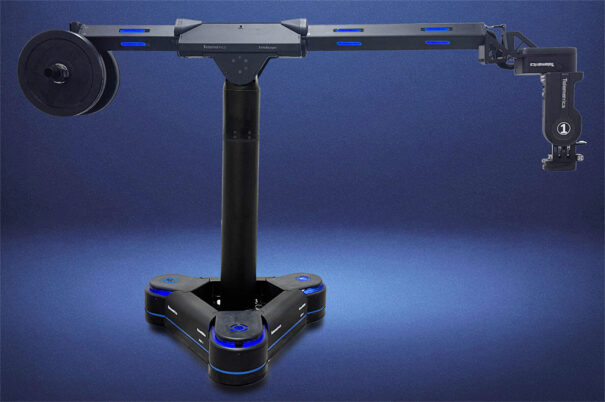Telemetrics debuts TeleScope, designed to upgrade studio cranes
El sistema robotizado TeleScope de Telemetrics aterriza en el mercado para cambiar la forma de gestionar las tomas con grúas e incorporarlas en una amplia variedad de contextos de producción.
TeleScope pretende ampliar las ventajas operativas y de seguridad probadas del OmniGlide (pedestal móvil robótico) al tiempo que redefine el brazo en los flujos de trabajo de producción tradicionales.
Disponible en tres tamaños (XL, L y pequeño), el nuevo TeleScope puede adaptarse a diferentes tipologías de estudio para captar todo tipo de tomas aéreas. El sistema es capaz de transportar una cámara pequeña, and aim and a teleprompter; de hecho, Telemetrics apostó por exhibir este sistema en NAB 2025 en combinación con una cámara Grass Valley LDX 150.
El sistema se combina con la base OmniGlide, la cual ayuda a deslizar la grúa por el suelo de una forma que “un operador humano nunca podría”. Manejable a través del panel de control STS RCCP-2A, TeleScope cuenta con “docenas” de sensores de seguridad de proximidad que cubren el brazo extensible para evitar colisiones no deseadas con otras piezas del decorado.
Diseñado para funcionar con prácticamente cualquier cámara profesional del mercado, el nuevo brazo robótico TeleScope puede capturar tomas que serían difíciles o imposibles de conseguir con otros equipos, como tomas elevadas, movimientos de barrido largos o tomas bajas. Está equipado con más de 20 sensores de seguridad de proximidad que cubren el brazo extensible y la base OmniGlide para mantener a salvo al equipo y evitar colisiones no deseadas con los decorados.
He brazo articulado se extiende más de 1,2 metros en su configuración estándar y puede funcionar a una velocidad lineal de 27,9 cm/segundo. Ofrece un movimiento prácticamente ilimitado, con un rango de movimiento vertical que va desde 30 centímetros del suelo hasta más de 2,3 metros (en la configuración estándar).
“Al diseñar el TeleScope, la seguridad fue un factor importante”, afirma Michael Cuomo, vicepresidente de Telemetrics. “La robótica suave y silenciosa formaba parte del desarrollo inicial, pero el producto no estaba completo hasta que se pudiera manejar de forma segura a distancia”.
Did you like this article?
Subscribe to our NEWSLETTER and you won't miss anything.



